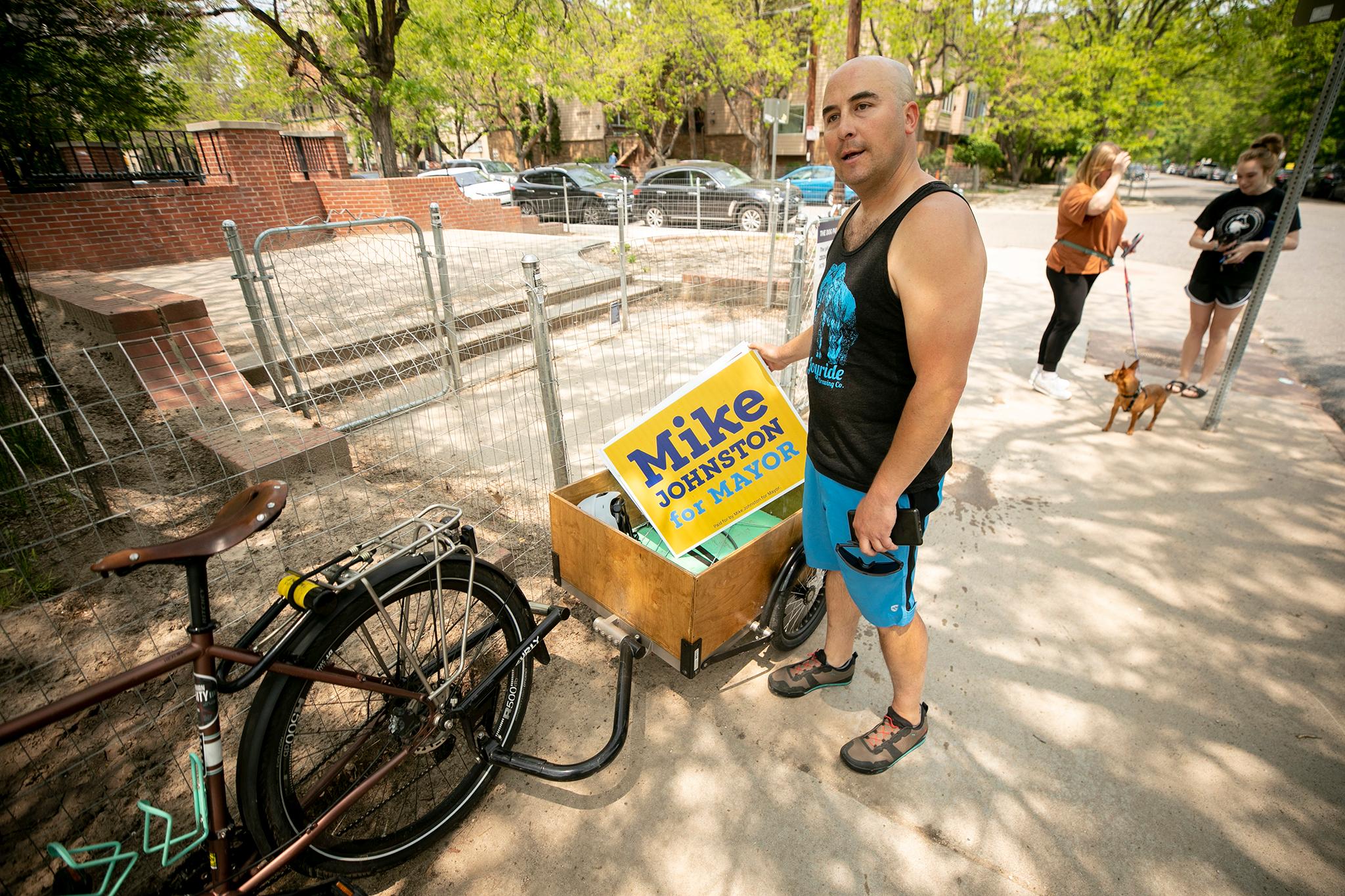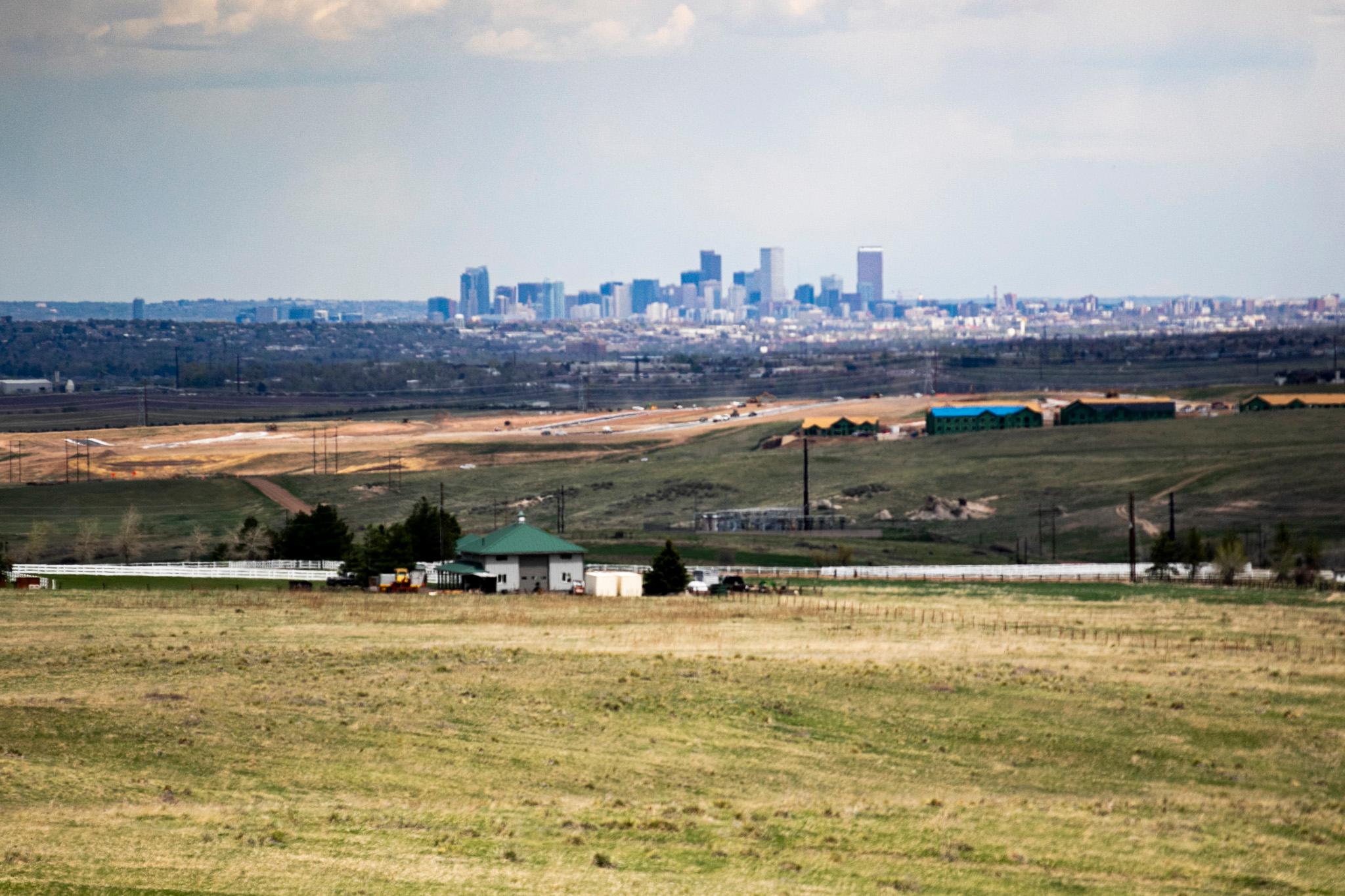Bryan Wilson isn't putting up with political campaigns that litter the public right of way with candidates' signs: Not Mike Johnston's. Not Kelly Brough's. Nobody's.
"Put whatever you want on your property," Wilson said. "Just don't obstruct the right of way."
So he's taking matters into his own hands.
Last week, he biked past the Park Hill Golf Course where Brough supporters had placed tiny star-shaped signs that failed to mention who paid for them. The campaign confirmed it was not official material. Wilson picked them up and took them home.
Then he walked his dogs in Congress Park, removing the signs as he went. He biked Capitol Hill, finding incorrectly placed signs in support of Johnston and City Council candidates Chris Hinds and Shannon Hoffman.

In the 2023 municipal elections, the worst offenders were the Yes on 2O and No on 2O campaigns fighting over the future of the Park Hill Golf Course.
But even in the runoff, campaigns are misbehaving.
City rules are clear about the matter.
"Signs must be located on private property," the city's zoning rules state. "No signs may be placed in the public right-of-way. This includes tree lawns, median strips, highway entrance and exit ramps, traffic signs and posts, and utility poles."
If people complain, the city will eventually show up to remove them or address them.
"City inspectors respond to all cases received via 3-1-1, which would include political signs," said Laura Swartz, a spokesperson for Denver's Community Planning and Development department. "It would likely be our team, but could also be right-of-way inspectors from the Department of Transportation and Infrastructure, depending on the location noted in the complaint."
Wilson has repeatedly complained about signs -- and other objects -- in the right of way. Did the city respond?
"It seemed like they at least made contact," he said. "I don't know if they removed them. But I would report, report, report. And then I've noticed signs that then did get relocated. So my theory is that somebody from the city, likely neighborhood inspectors, came by, provided notice, and then the homeowner, the property owner likely moved it."
That works well when the violations are near single-family homes.

But apartment complex owners are often out of state and the complaints don't always lead to swift action, Wilson said.
Campaigns have told Denverite they are vigilant about removing improperly placed campaign signs. But sometimes, there are too many to address.
Wilson quit waiting around for the city or campaign workers to move improperly placed signs.
Instead, he's pedaling around town plucking them up himself and carting them back to his Congress Park garage, where he's storing them in case anybody wants them back.
When he collects the signs, he posts about it on Twitter, tagging the candidates to let them know he's holding onto them and happy to return them, regardless of whether he sees eye to eye with the candidate.
Only one member of Johnston's campaign has offered to take him up on the offer and reuse them.
The city wants more people to help clear signs from the right of way.
"Because city rules do not allow signs to be placed in the tree lawn and right-of-way, people are allowed and encouraged to remove and recycle signs from these locations," she said.
Who are the worst perpetrators?
"Everyone has had some at some point, at least as far as I've seen," he said.
The city itself does not track improperly placed signs by candidate, Swartz said.

Wilson's efforts are concentrated in neighborhoods near Congress Park. He said he has not picked up any District 8 signs for Shontel Lewis and Brad Revare, though Denverite recently saw both in the public right of way. That's largely because he rarely makes it to Northeast Denver.
But he's making a trip soon and plans to remove the signs from the right-of-way as he goes.
"I'd like to go to Station 26," Wilson said. "So I'll head to Home Depot, pick up a few things and then grab a beer and I'm sure I'll see a few.
Why go to such lengths?
"They're a tripping hazard," Wilson said.
He's also concerned that they can prevent drivers from seeing pedestrians and bikers, particularly kids.

"It's going to take more than one sign for that to happen," he said. "So in my mind, if a bunch of them there are a problem, then we shouldn't allow any of them, which they're not allowed. And so it just makes everything safe in my mind. And I'm not even a dad. And I'm worried about little kids and people tripping on stuff."

It's not just political signs Wilson attempts to remove from the public right of way.
The rules governing what can be put in the public right of way also restrict certain types of fencing, landscaping, boulders and snow.
"I'm just choosing these because, well, I can fit these in my trailer," he said. "I have moved boulders. I've relocated some, but that is exhausting. Especially with the bigger ones."
How does he move boulders?
"I just pick them up and chuck them."











